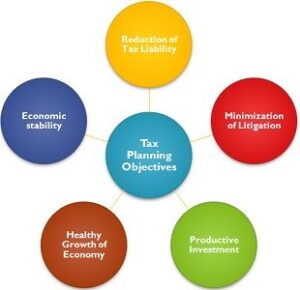 Tax planning methods
Tax planning methods
Tax planning methods encompass an array of strategies and techniques employed to minimize tax liabilities and optimize overall tax outcomes. These methods involve a comprehensive understanding of tax laws, leveraging available deductions, credits, exemptions, and incentives, as well as structuring financial transactions and activities in a manner that maximizes tax efficiency.
Here are some commonly used tax planning methods:
Income Shifting:
This method involves shifting income from higher-taxed individuals or entities to lower-taxed ones. For example, in a family-owned business, income can be allocated to family members in lower tax brackets to reduce the overall tax liability.
Expense Deductions:
Maximizing allowable deductions is a key tax planning method. It involves identifying and claiming all eligible business expenses, such as operating expenses, depreciation, employee benefits, and interest payments, to reduce taxable income.
Tax-Advantaged Accounts:
Utilizing tax-advantaged accounts, such as Individual Retirement Accounts (IRAs) or 401(k) plans, allows individuals to contribute pre-tax income, which can lower their taxable income and provide tax-deferred growth on investments until withdrawal.
Tax Credits:
Tax credits directly reduce the tax liability, making them an effective tax planning method. Examples include child tax credits, education credits, energy-efficient credits, and research and development credits. Identifying and claiming all eligible tax credits can significantly reduce the tax burden.
Capital Gains Planning:
Timing the sale of assets to optimize capital gains taxes is a commonly use method. For instance, holding assets for more than one year before selling them can qualify for long-term capital gains rates, which are often lower than short-term rates.
Charitable Contributions:
Donating to qualified charitable organizations not only supports worthy causes but also provides tax benefits. Charitable contributions can be deduct from taxable income, reducing the overall tax liability.
Estate Planning:
Estate planning involves structuring assets and inheritances to minimize estate taxes. Strategies may include setting up trusts, gifting assets, and utilizing estate tax exemptions.
International Tax Planning:
Multinational businesses engage in international tax planning to optimize their global tax position. This includes considering transfer pricing, tax treaties, offshore entities, and tax-efficient structures to reduce overall tax liabilities.
It’s important to note that tax planning methods should always be undertaken within the legal framework of the applicable tax laws and regulations. It is recommend to seek advice from tax professionals or tax consultants who have expertise in tax planning to ensure compliance and maximize tax benefits.
FAQs
1.What is tax planning?
Answer: Tax planning is the process of organizing your finances to minimize tax liability legally.
2. What are the main methods of tax planning?
Answer: The main methods include income splitting, tax deferral, and utilizing deductions and credits.
3. What is income splitting?
Answer: Income splitting involves distributing income among family members in lower tax brackets to reduce overall taxes.
4. What does tax deferral mean?
Answer: Tax deferral means postponing tax payments to a future date, often by using retirement accounts or investments.
5. How can deductions help in tax planning?
Answer: Deductions reduce taxable income, leading to lower tax liability. Common deductions include medical expenses and mortgage interest.
6. What are tax credits?
Answer: Tax credits directly reduce the amount of tax owed. They can be more beneficial than deductions because they lower taxes dollar-for-dollar.
7. What role do retirement accounts play in tax planning?
Answer: Contributions to retirement accounts can provide tax benefits, such as deductions or tax-free growth, depending on the account type.
8. How can business expenses affect tax planning?
Answer: Legitimate business expenses can be deducted from income, reducing taxable profit and lowering overall taxes for business owners.
9. What is estate planning in relation to taxes?
Answer: Estate planning involves strategies to manage and reduce estate taxes when passing assets to heirs.
10. Why is it important to review tax planning regularly?
Answer: Regular reviews help adapt to changes in tax laws, income, and personal circumstances, ensuring optimal tax savings.
